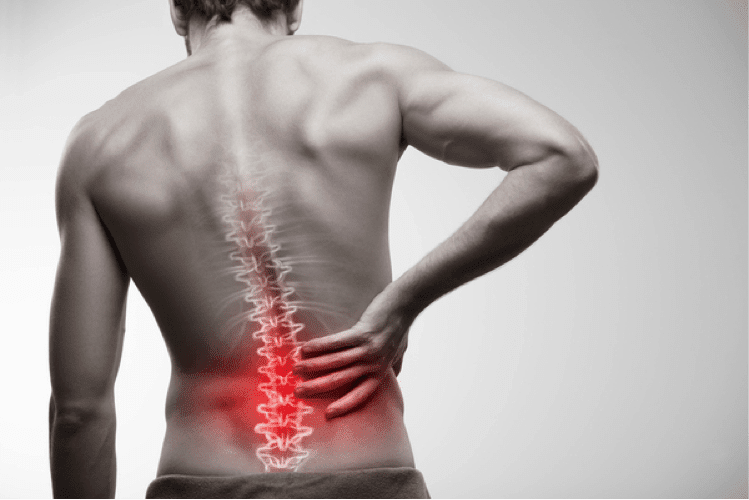Back pain usually doesn’t develop overnight, (unless it is the result of trauma) it’s most likely a result of years of poor movement patterns, inactivity, or sports. Not using the body, the way, it was meant to move can result in pain over time. The human body is a kinetic chain and if there is a kink in the chain and overuse in one area it can show up as pain in another…like the back for example.
What should the joints of my body be doing?

The Foot: Stability and Motor Control
The Ankle: Mobility and Flexibility
The Knee: Stability and Motor Control
The Hip: Mobility and Flexibility
The Lumbar and Sacral Region: Stability and Motor Control
The Thoracic Region: Mobility and Flexibility
The Upper Cervical Region: Mobility and Flexibility
The Shoulder Scapular Region: Stability and Motor Control

Most people will experience back pain at some point in their life. If they see a doctor, they are often told rest, ice, heat and take NSAID. Next step is let’s schedule an “MRI” …then they’re given a diagnosis of degenerative disc disease, herniation, or something else that may or may not have caused their pain. Now they are thinking “I have a bad back I can’t do anything!” This leaves the person frustrated, depressed with no actual plan on how to get back to activity or how to pick up their screaming baby, their laundry basket or get through a day at work.
Hopefully they end up with an educated trainer who knows what to do. What can we do, educate yourself as a trainer because guaranteed one of these people will most likely end up at your door. When you’re armed with the knowledge to help them back to a routine and out of pain, it makes them smile and makes you feel amazing!
What’s the first thing we should do when the client or athlete ends up at our front door? LISTEN to what they have to say. We need to make a detailed history of their symptoms, lifestyle, activity level and medical history. (But don’t play Dr.) If they’re cleared to exercise and have been told, it back hurts because you’re older, you need to exercise more, or you sit too much, it is likely they would benefit from improving the function of their body as a whole.
LISTEN to what their goals are and screen them to see where their body needs to move better. It’s important to think of the body as a unit and not think of individual muscles, it doesn’t work that way and we can’t train it that way. Most often in my experience of 30+ years of working as a trainer if their stability, mobility, and strength are improving often her back pain will lessen. The other important factor is, if something hurts don’t do it, it is a yes or no answer, either it hurts or it doesn’t.
According to Dr Stuart McGill who has produced over 245 peer-reviewed scientific journal papers, several textbooks, and many international awards including the “Order of Canada” in 2020 for leadership in the back pain area. He recommends the following for trainers when dealing with clients with back pain.
Trainers can “create” clients by building their capacity to train – even with back pain.
A thorough assessment will identify the cause of pain in terms of offending motions, postures, and loads (these are variables familiar to the trainer).
Avoiding clients’ pain triggers will allow a de-sensitization of the pain pathway.
After removing the pain triggers, build a foundation for pain-free movement. Know when to progress and regress a client.
Trainers have the potential to play the largest role in influencing movement patterns that will either cause or cure most back pain.
In my experience one good place to start is by teaching deep breathing which incorporates deep abdominal muscles while performing some of the basics…
2-leg bridging hands on glutes for activation
side lying clams
supine bent legs adduction with a pilates ring
quadruped hip extension on elbows with bent leg
Some things to avoid like rotational exercises and certain postures, motions and loads that cause pain may help to get them pain free or more functional. Everyone is different and some people progress quicker than others, most important is to regress and progress appropriately and don’t play doctor. #movementismedicine #educationispower

Reference:
https://www.ifittraining.co.uk/insights/joint-by-joint-approach-part-1/#:~:text=A%20systematic%20theory%20of%20approaching,segments%20move%20on%20mobile%20joints%E2%80%9D.
https://www.strengthcoach.com/resource/62b35a433cefed78d20df4b3




